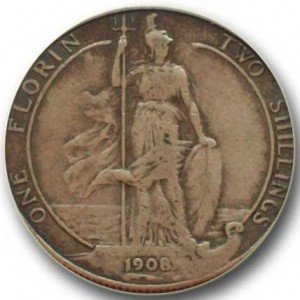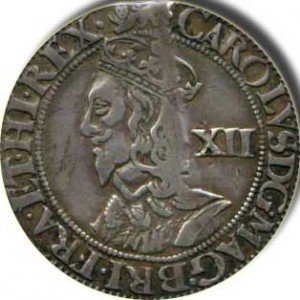Florin coins for sale
How did the Florin get its name?
 Florin derives from the city of Florence (or Firenze) in Italy and frequently refers to the gold coin struck in 1253.
Florin derives from the city of Florence (or Firenze) in Italy and frequently refers to the gold coin struck in 1253.
This money format was plagiarised in other countries and the word florin is used, for example, in relation to the Dutch guilder (abbreviated to Fl) and the coin first issued in 1344 by Edward III of England, then valued at six shillings, composed of 108 grains (6.99829 grams) of gold, and more recently relating to a British pre-decimal silver coin (later nickel silver) piece also known as a a two shilling ‘bit’ (abbreviation 2/-).
The British florin coin was kept in use after decimalisation and became worth 10 new pence (or two shillings). Older (pre 1937) examples have a higher silver content and are worth some money in scrap alone so if you come across a large bowl of old florins for sale very cheaply, and they are pre 1937, it may well be worth buying them, even if they are in terrible condition because the silver in the coins is valuable as well. Like the shilling, they remained as legal tender for several years after decimalisation. Nowadays, the British 10 pence coin is smaller and ligher (and, of course, does not contain any silver) . Originally they were the same size and weight as the older coin and this made the currency in general far more interesting as old coins mixed with the new.
The term “two bob” is still commonly used in Britain today despite the fact that these old coins disappeared from circulation decades ago. Furthermore, it is becoming harder to find many things that you can actually buy for a bob (shilling), let alone two bob!
Florin coins for sale
[phpbay keywords=”florin -drive -close -house -street -road -australia -african -australian -africa -netherlands -aruba -note -gold -french -ireland -melbourne” num=”200″ siteid=”15″ sortorder=”PricePlusShippingHighest” templatename=”columns” columns=”2″ itemsperpage=”20″ paging=”true”]
We hope you have found this page helpful . If so, please like us on Facebook or add us to Google+. We also hope you have been able to find a choice florin to add to your coin collection.
 Shilling coins for British coin collectors. A
Shilling coins for British coin collectors. A